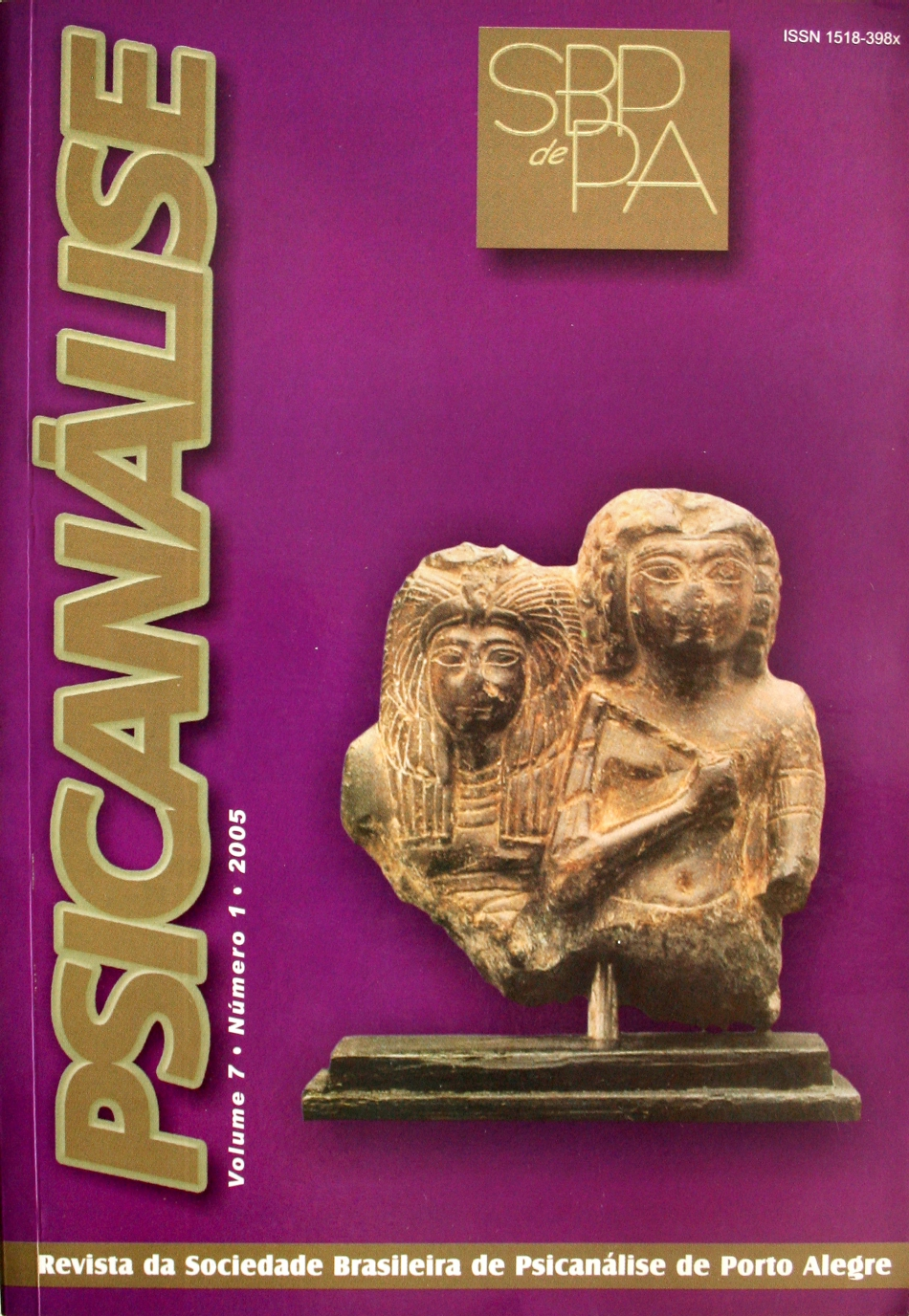Science and fiction in the psychoanalytical game
DOI:
https://doi.org/10.60106/rsbppa.v7i1.177Keywords:
Fetal psychism, Dreaming, Psychoanalytical treatmentAbstract
In this paper I intend to enlarge the imaginative conjecture of pre-natal aspects of the mind to include a diverse group of thoughts without a thinker and wild intuitions or untamed thoughts. This extension has the intention of extending psychoanalytical investigation from the vertex of mental growth. I suggest the idea that there is an o ptimum method for a creative transformation and withpossibilities of evolution for these pre-natal aspects. This method is dream-workalpha, which in the mental state of being awake can be used as pre-conception. This is one of the axes of the work. The difficulties in clinical practice with patients that have developed an exo-skeleton instead of a true contact with their emotional life, led me to revalue dreams, the use of models and personification as instruments equivalent to toys. The terms science and fiction conjugated with psychoanalysis contain a reflection about instruments that combined, provide a binocular vision for observation of the field of psychic reality. Psychoanalytical game has an allusion to the extension of the psychoanalytical method to child’s analysis, providing them with the means to communicate their emotional experiences.
Downloads
References
BIANCHEDI, E.; PISTINER DE CORTIÑAS, L. et. al. Bion Conocido / Desconocido. Buenos Aires: Ed. Lugar, 1999.
BION, W.R. Experiences in Groups. London: Tavistock, 1961.
______. (1963). Elements of Psychoanalysis. London: Karnac Books, 1984.
______. Transformations. London: W. Heinemann, 1965. ______. Aprendiendo de la Experiencia. Buenos Aires: Paidos, 1966.
______. Attention and Interpretation. London: Tavistock, 1970.
______. (1978). Bion in New York and Sao Paulo. Stathclyde: Clunie Press, 1980.
______. (1979). Making the Best of a Bad Job. In: Clinical Seminars and Four Papers. Oxford: Fleetwood Press, 1987.
_____. La Tabla y La Cesura. Buenos Aires: Gedisa, 1982.
_____. A Memoir of the Future. London: Karnak Books, 1990.
_____. Cogitations. London: Karnak Books, 1991.
_____. Diferenciación de la Personalidades Psicóticas y No Psicóticas. In:______. Volviendo a Pensar. Buenos Aires: Lumen-Hormé, 1996.
______. El Mellizo Imaginario. In:______. Volviendo a Pensar. Buenos Aires: Lumen-Hormé, 1996.
BORGES, J. Funes el memorioso. In:______. Ficciones. Buenos Aires: Emecé, 1957.
CORTÁZAR, J. Imagen de John Keats. Buenos Aires: Alfaguara, 1996.
FREUD, S. (1900). The Interpretation of Dreams. In: SE. v.4 e 5.
FREUD, S. (1911). Formulations on The Two Principles of Mental Funcioning. In: SE. v.12.
KEATS, J. Letters. London: Oxford University Press, s.d.
KLEIN, M. (1929) La Personificación en el Juego de los Niños. In: The Writings of Melanie Klein. London: Karnak Books,1992.
LIBERMAN, D. et. al. Del Cuerpo al Símbolo. Buenos Aires: Kargieman, 1983.
MANKIEWICZ, R. Historia de las Matemáticas, Del cálculo al caos. Buenos Aires: Paidos, 2000.
MELTZER, D. La Aprehensión de la Belleza. Buenos Aires: Spatia, 1990.
______. Exploración del Autismo. Buenos Aires: Paidos, 1979.
MONEY-KYRLE. Man’s Picture of the World. London: Duckworth, 1961.
PIRANDELLO, L. Seis Personajes en Busca de un Autor: comedia por Hacer. Buenos Aires: Ediciones del 80, 1980.
PROUST, M. À la Recherche du Temps Perdu, Du Côté chez Swann. Paris: Gallimard, 1994.
Downloads
Published
How to Cite
Issue
Section
License
I attribute the copyrights that belong to me, on this work, to SBPdePA, which may use and publish it by the means it deems appropriate, including on the Internet or in any other computer processing.
















